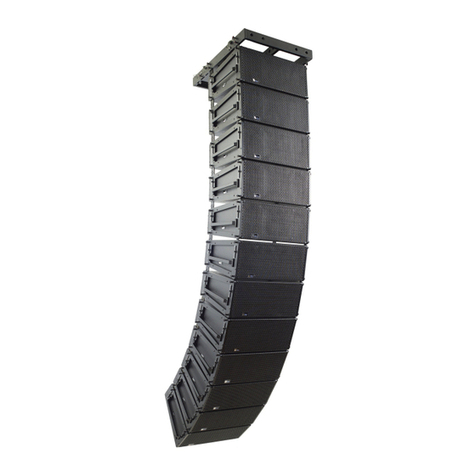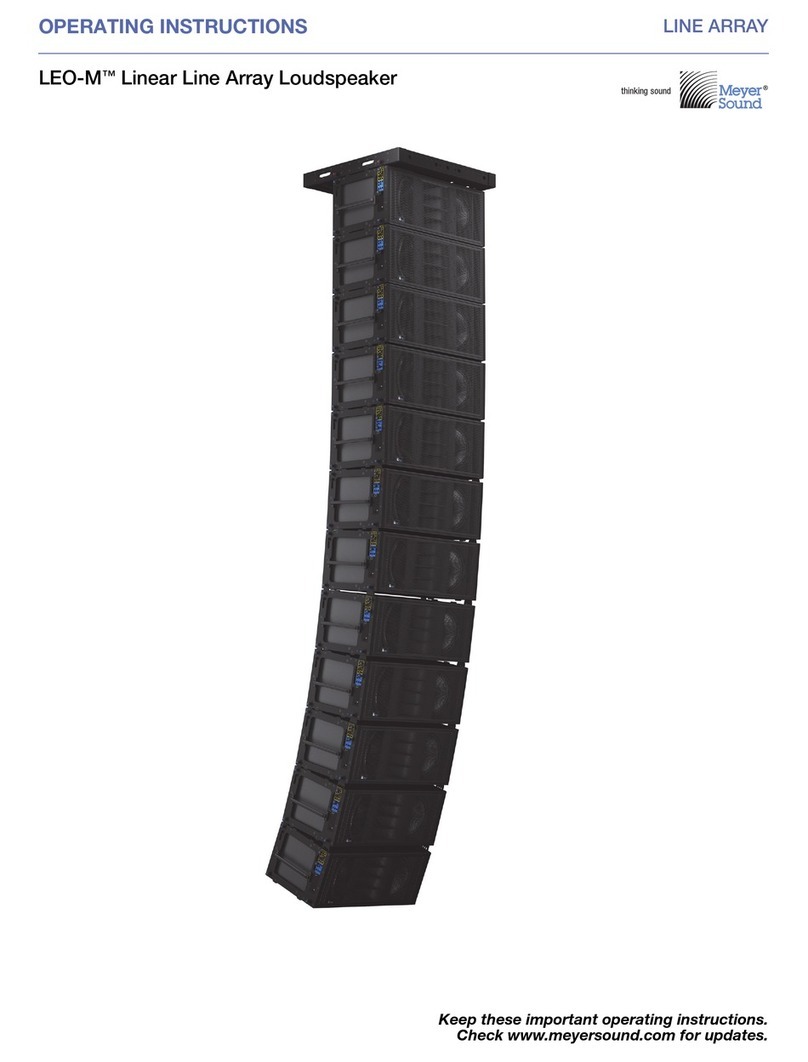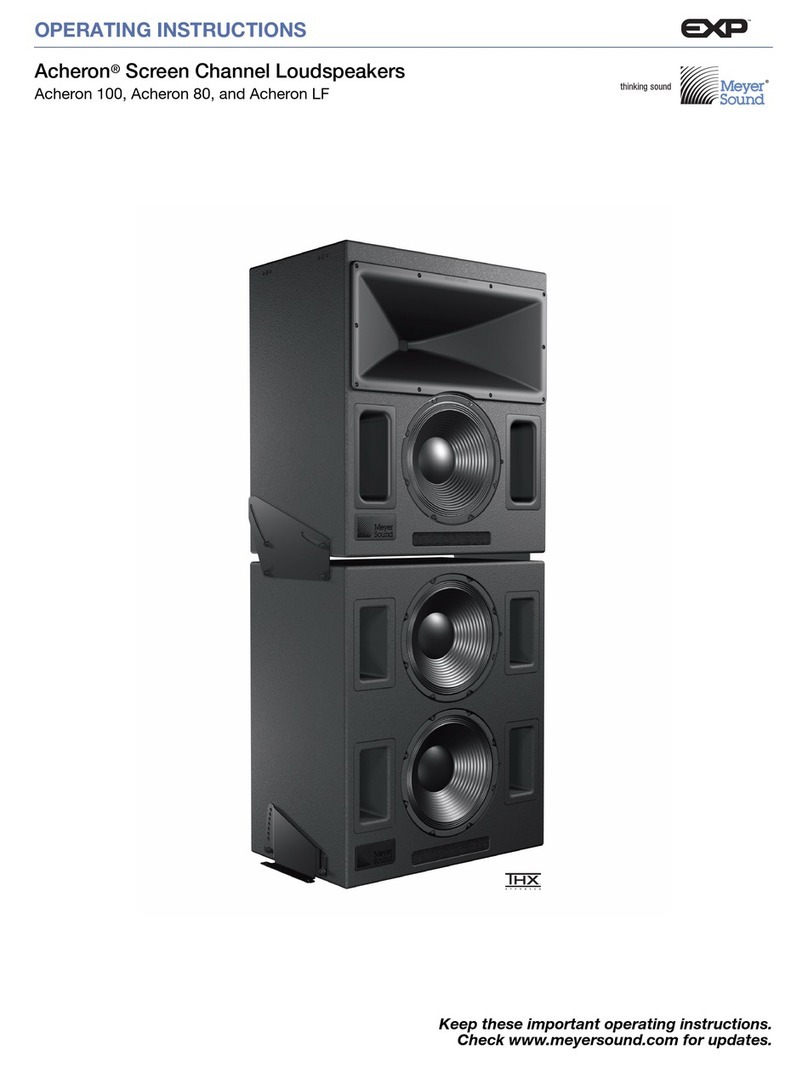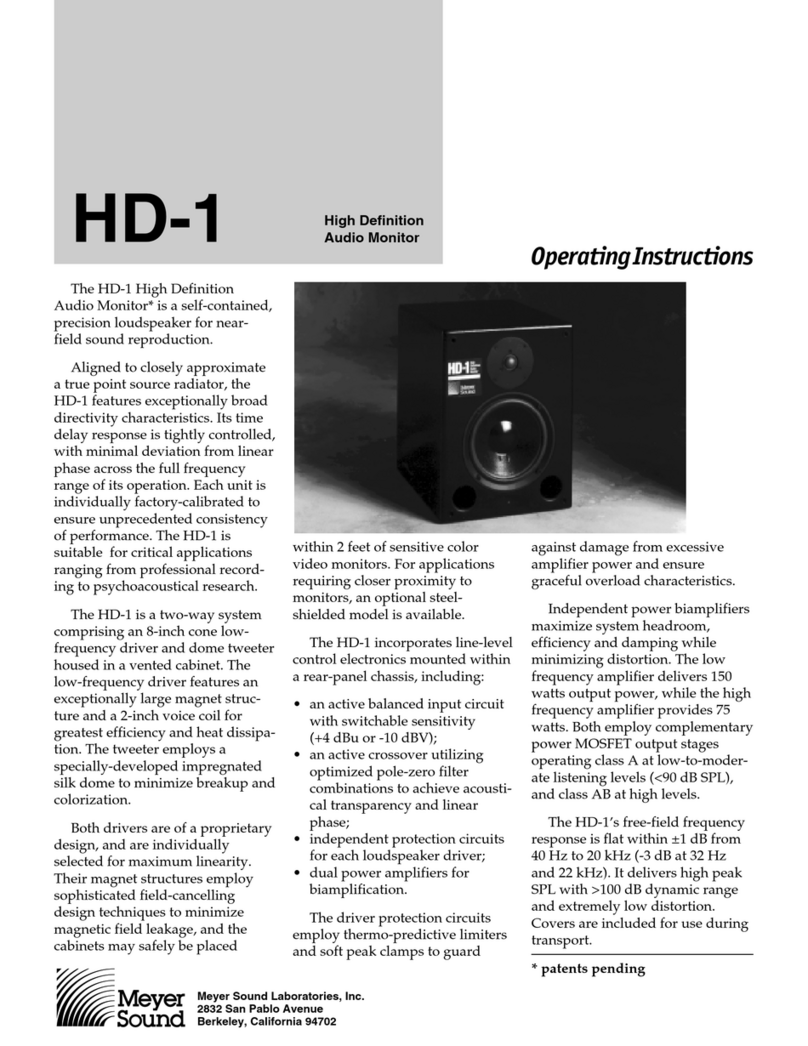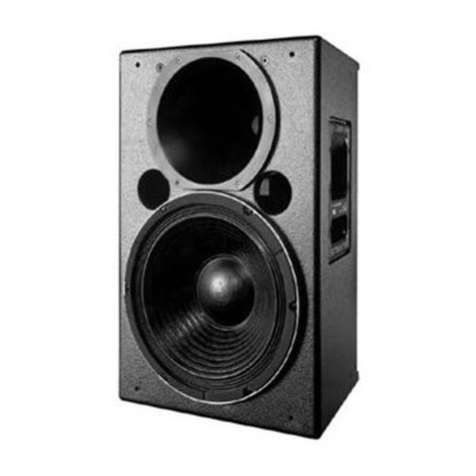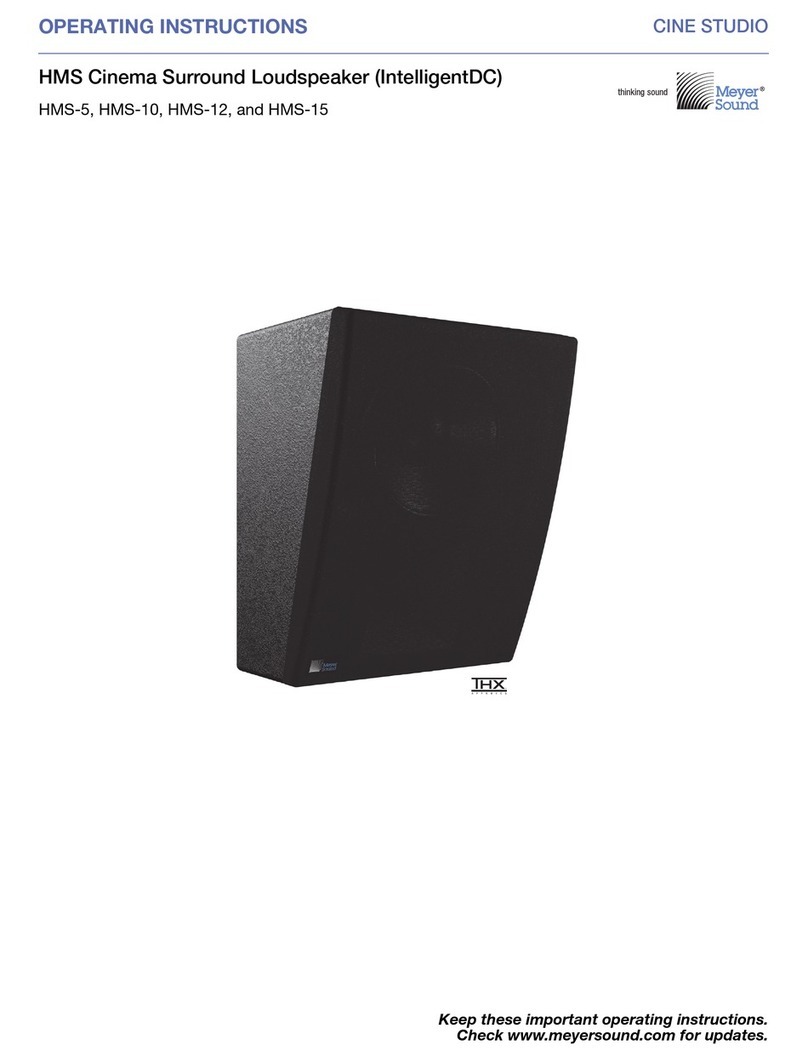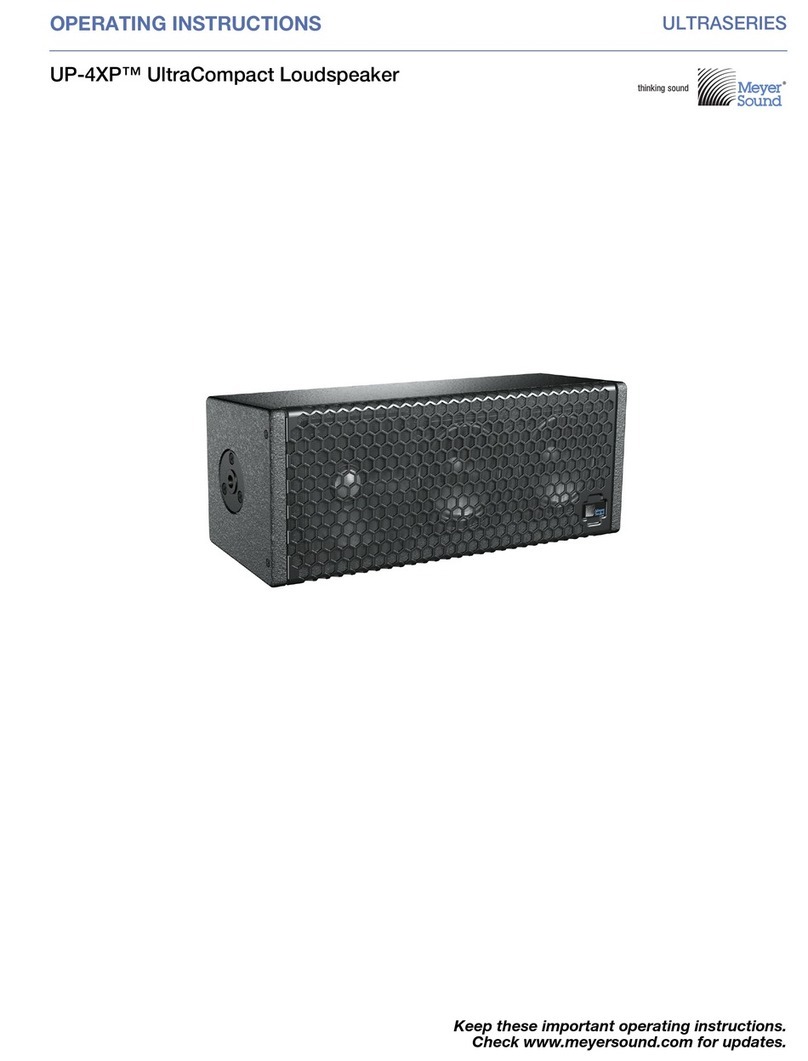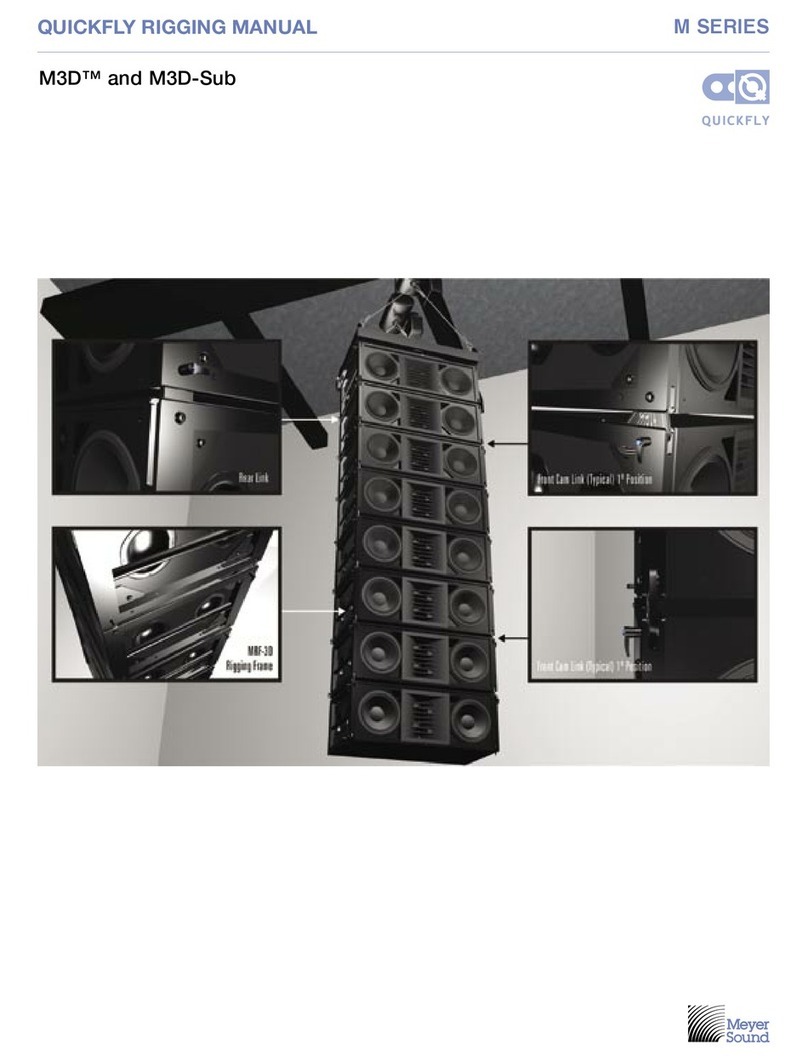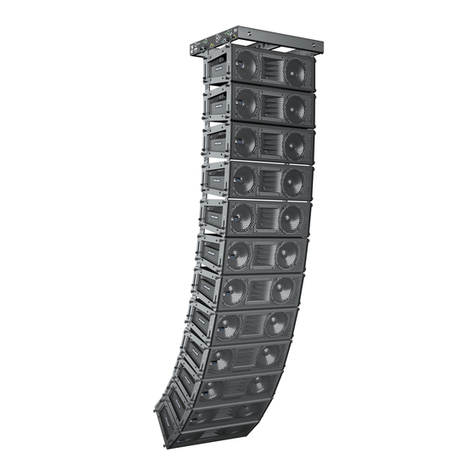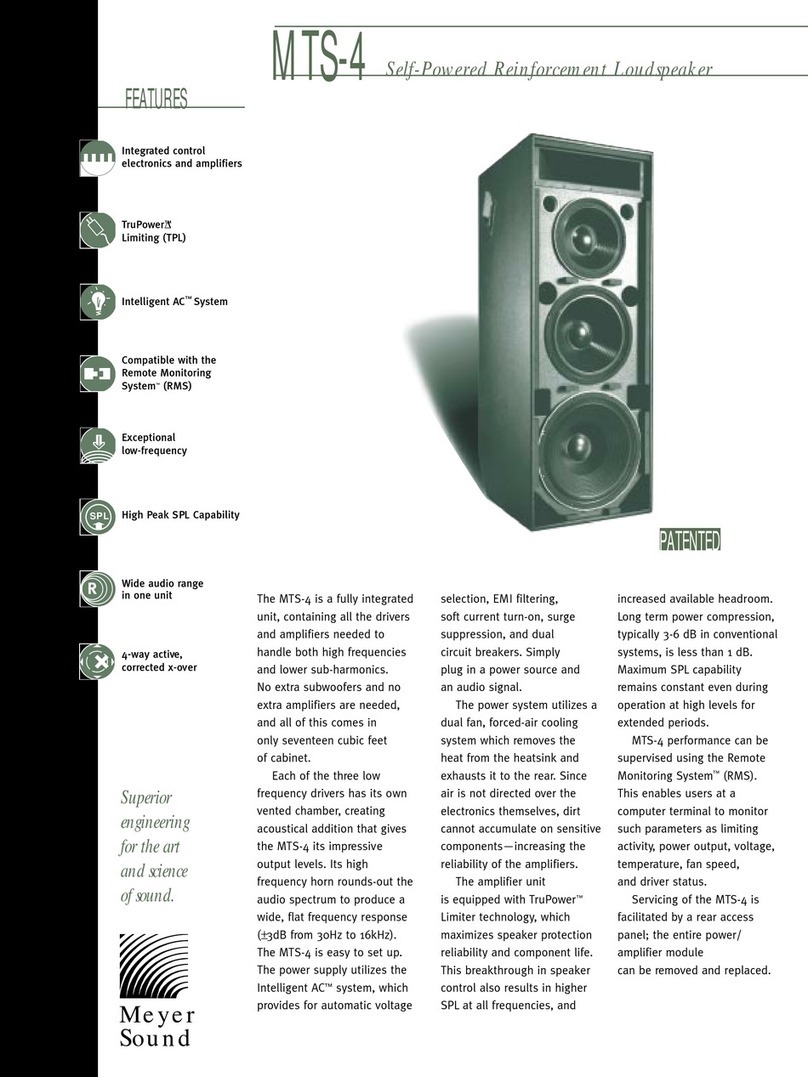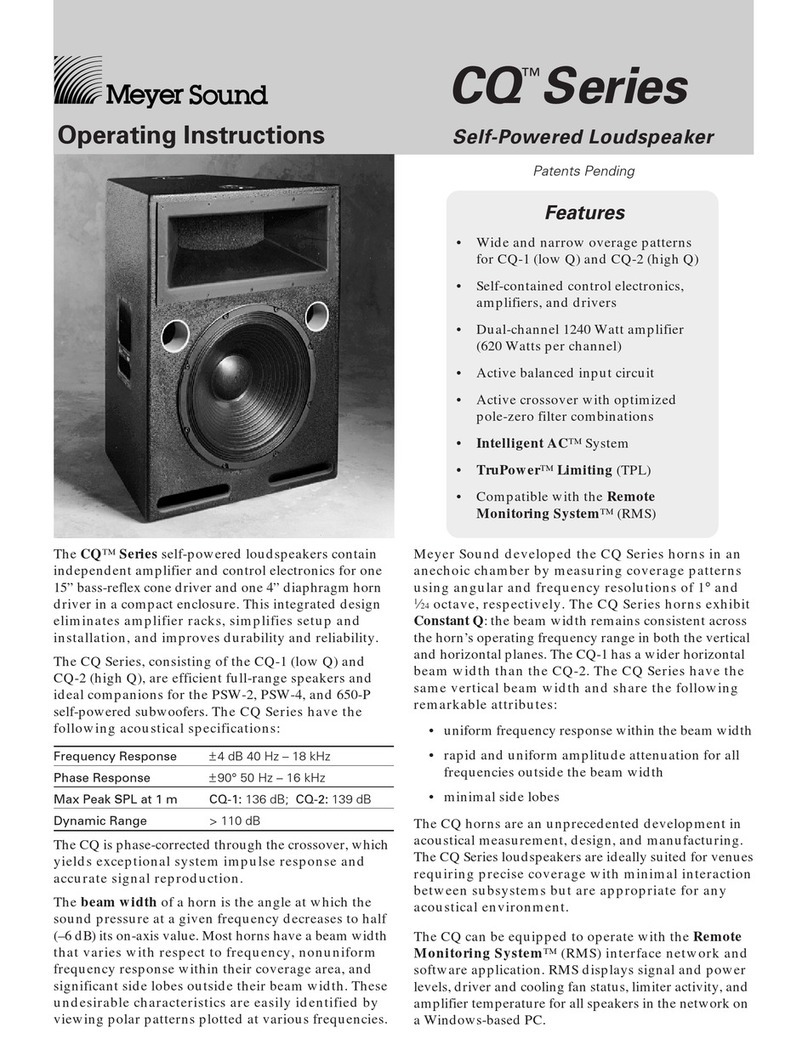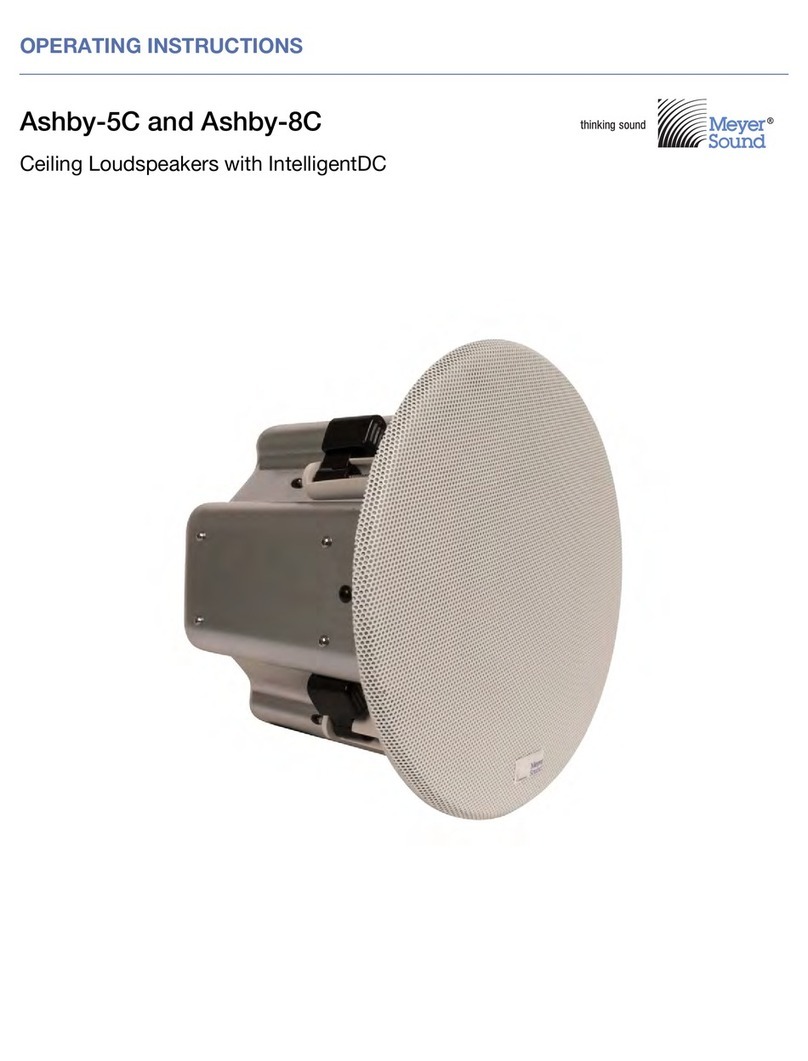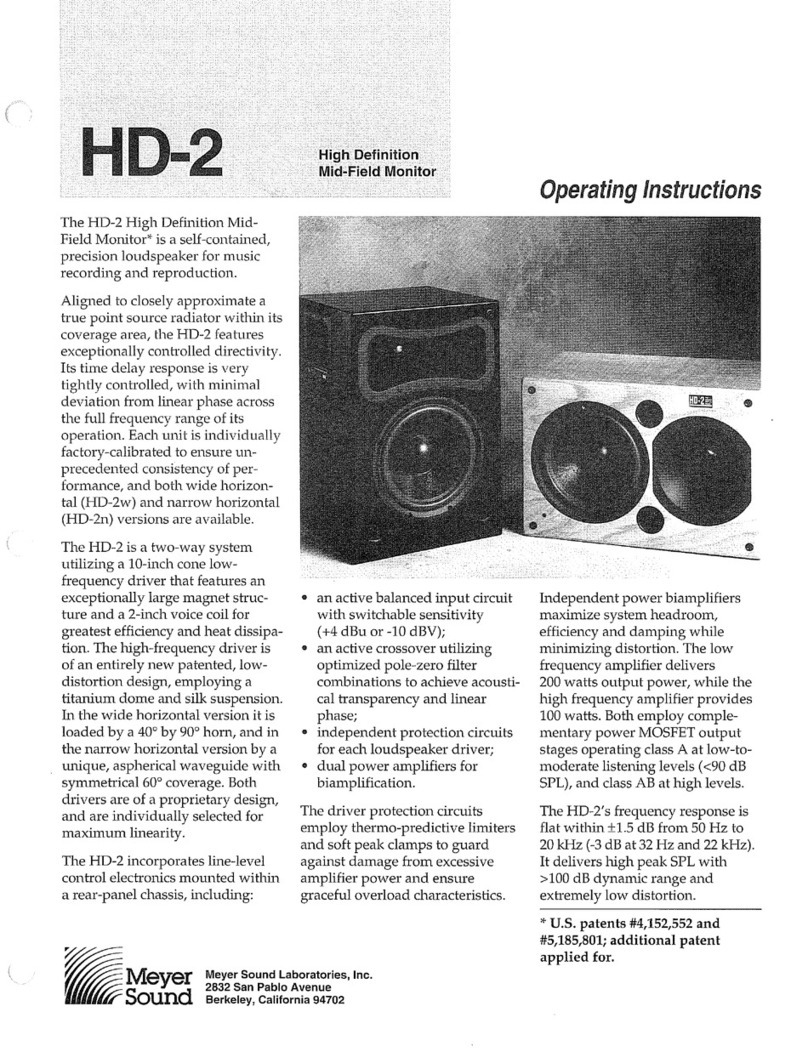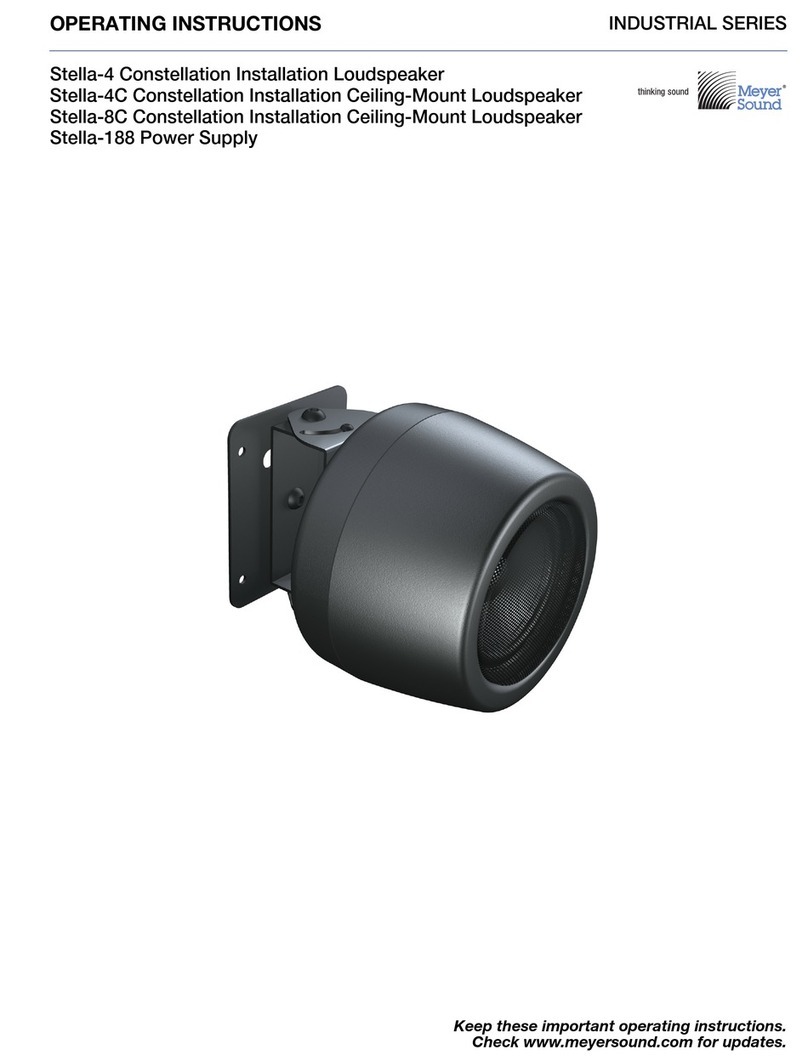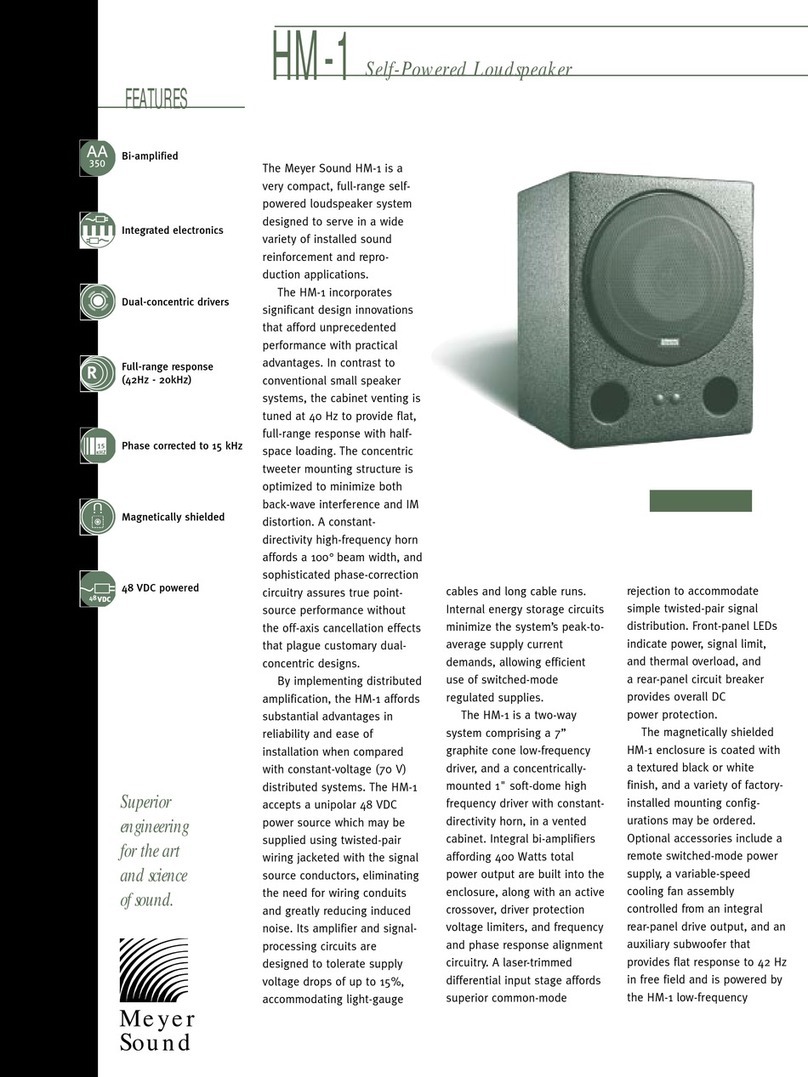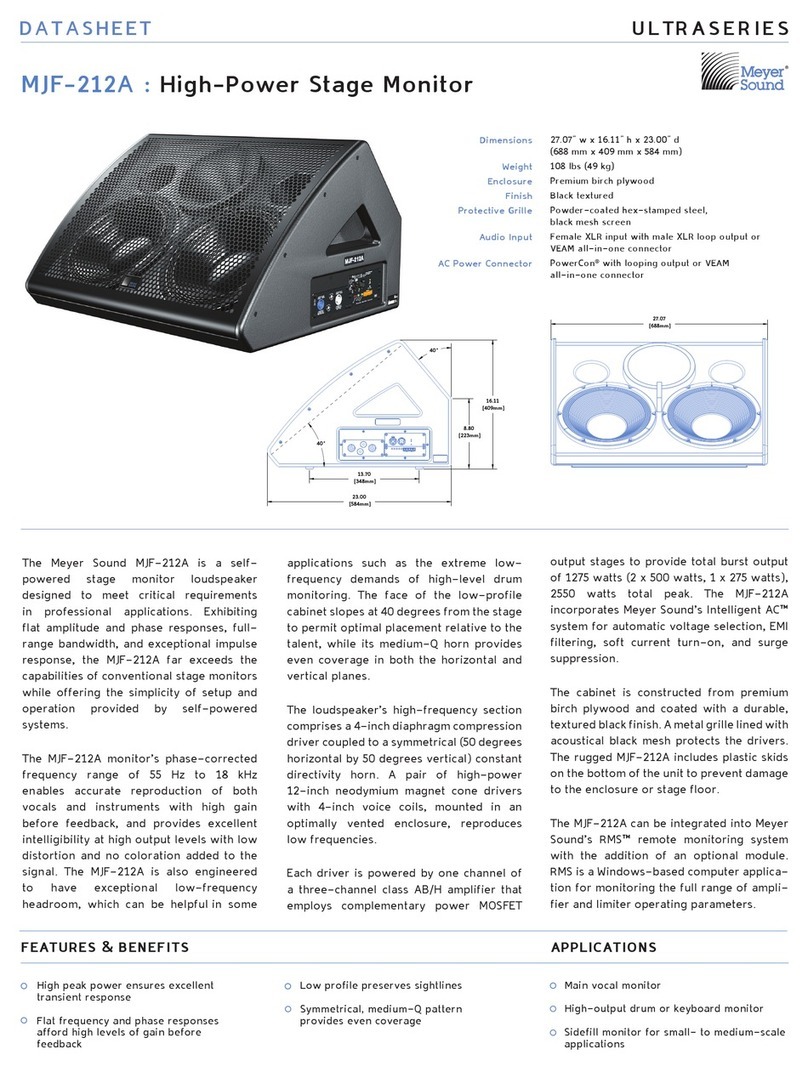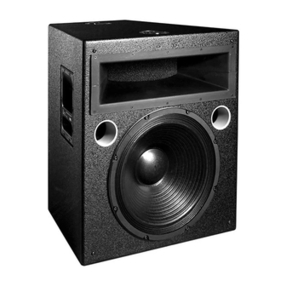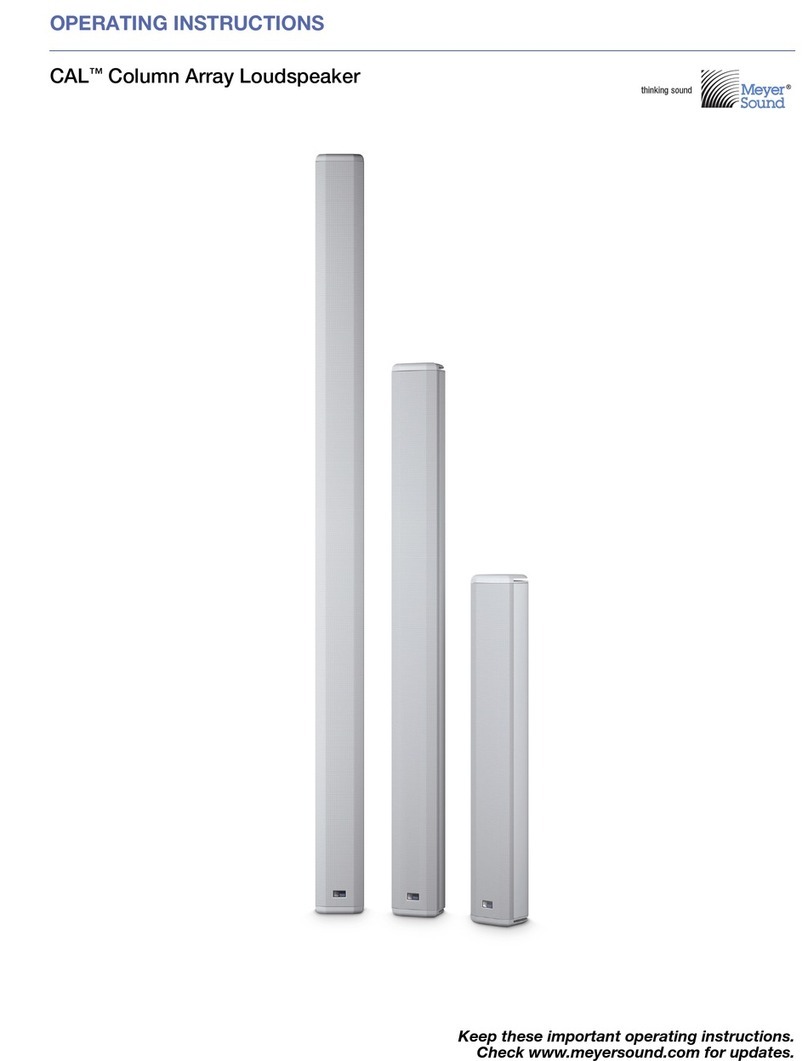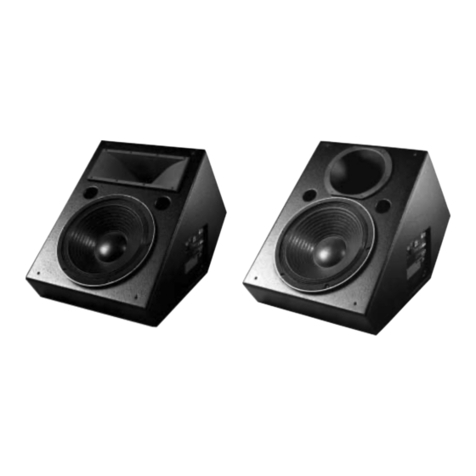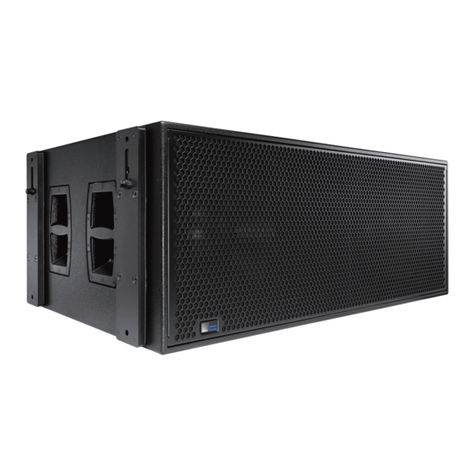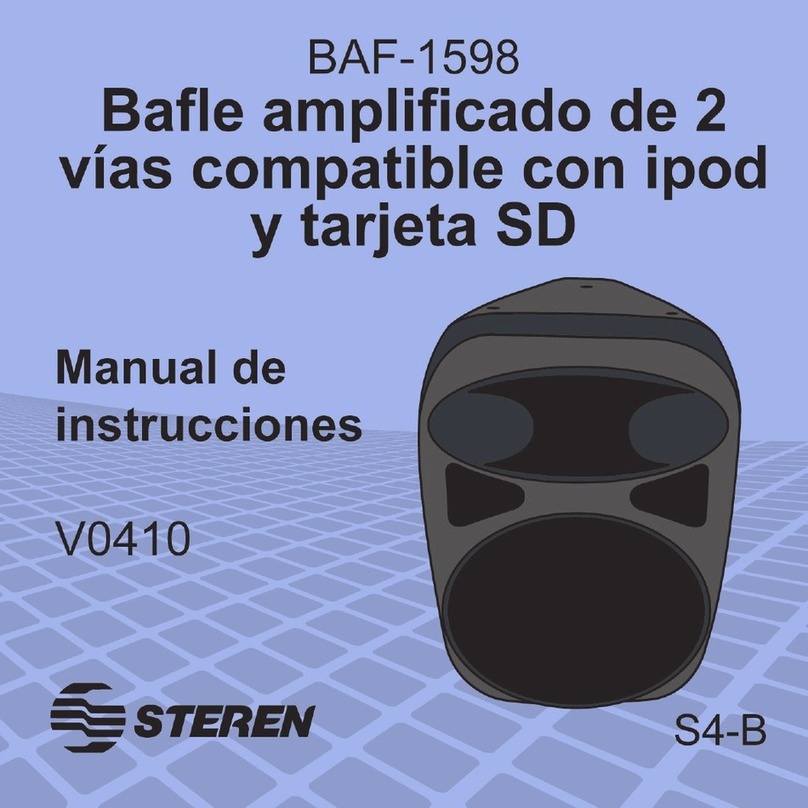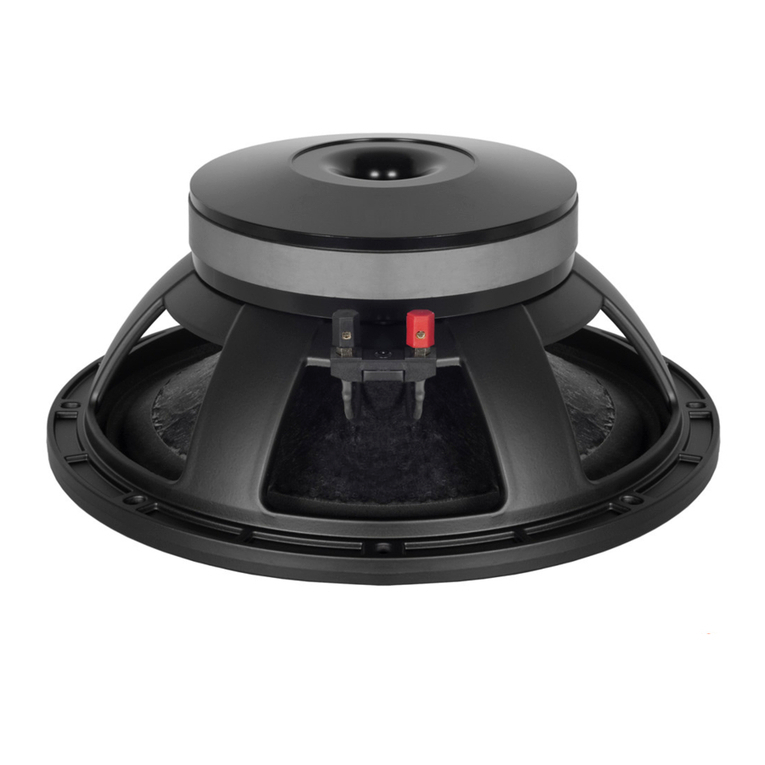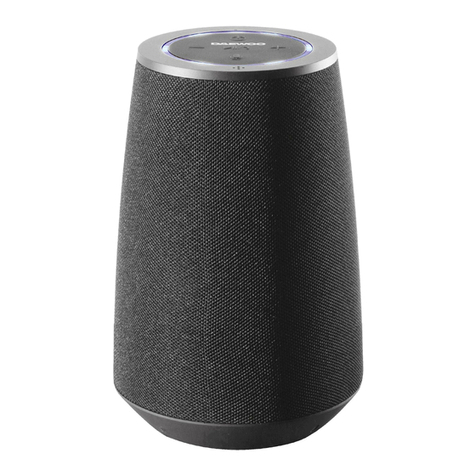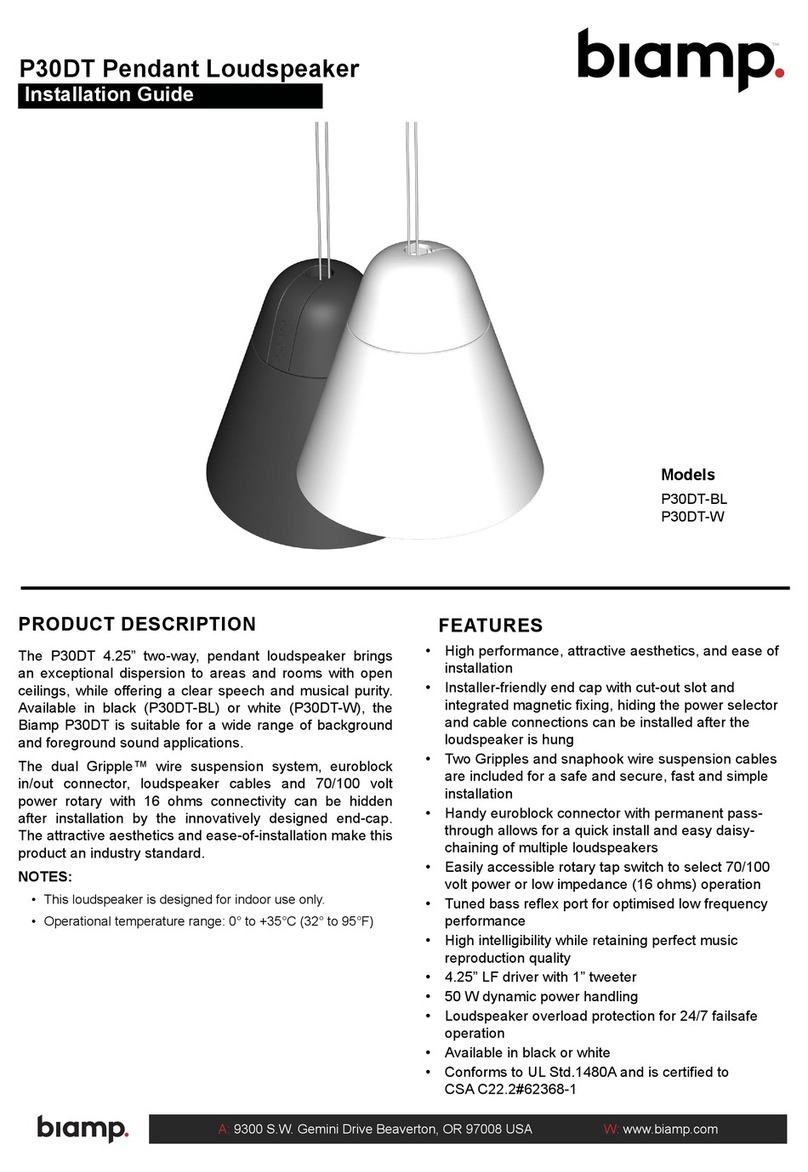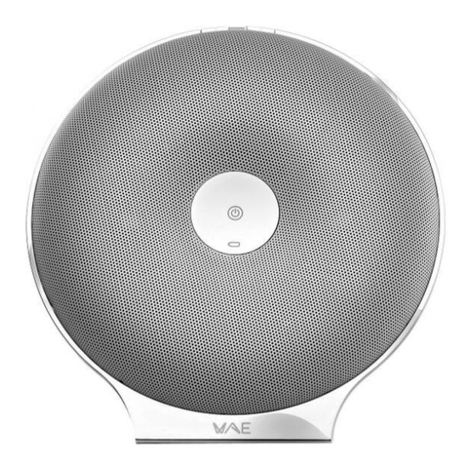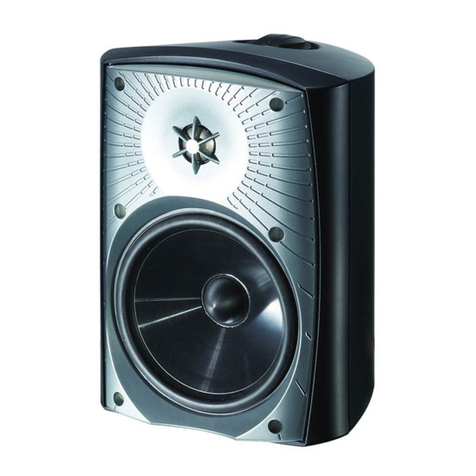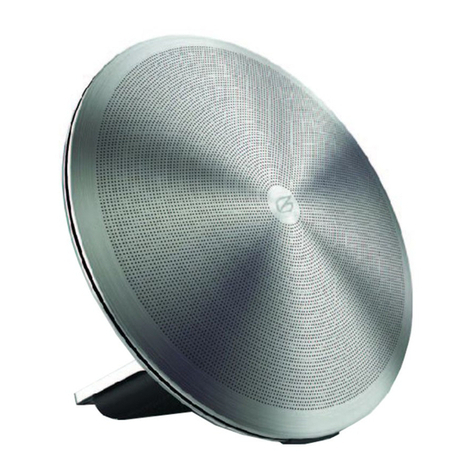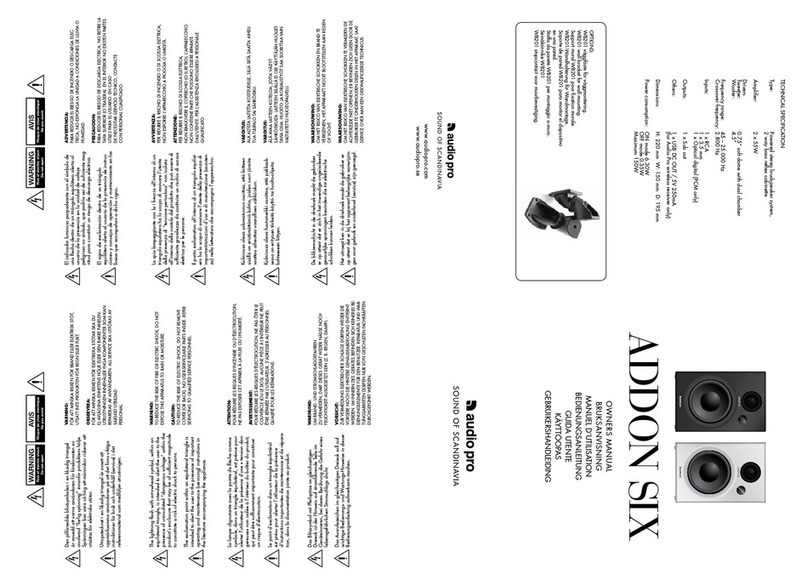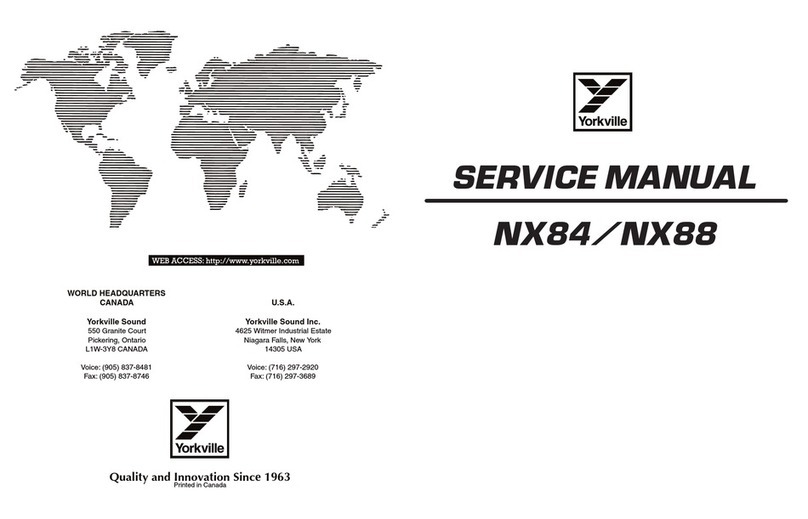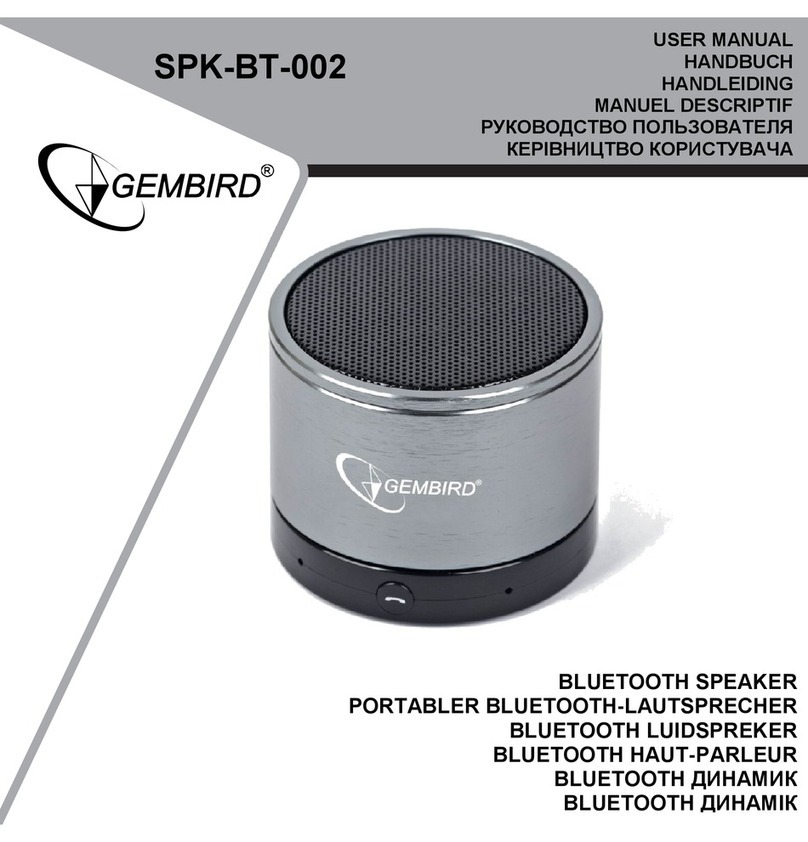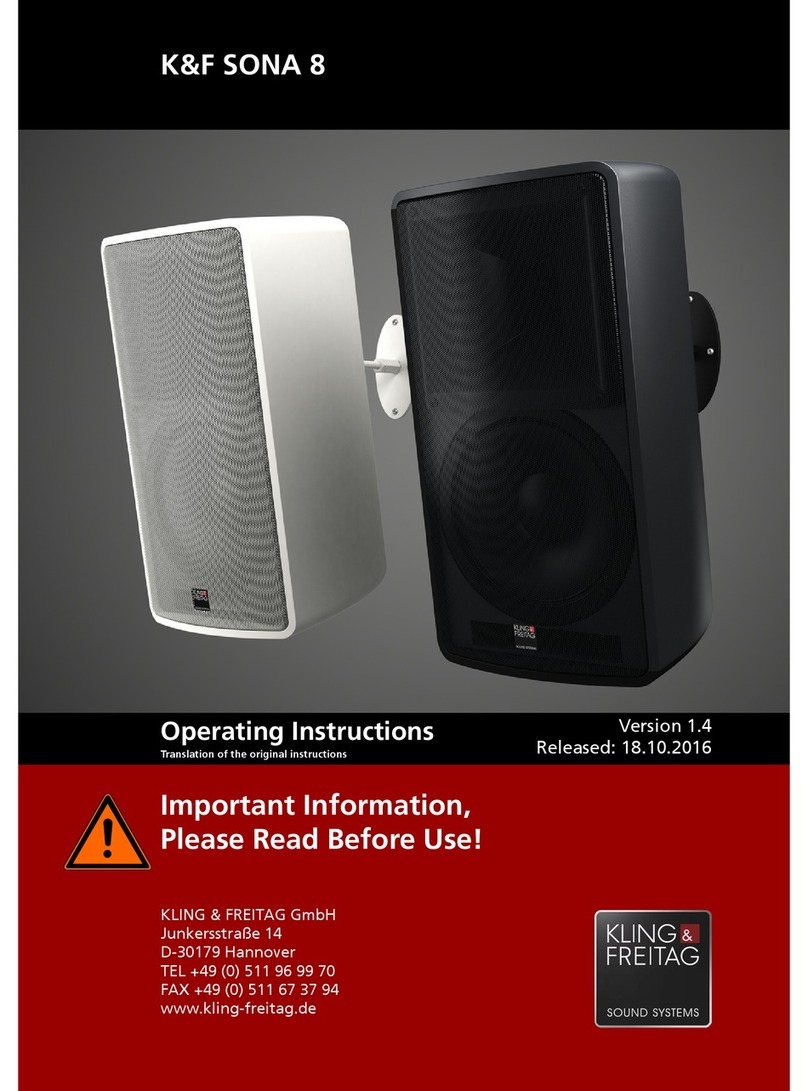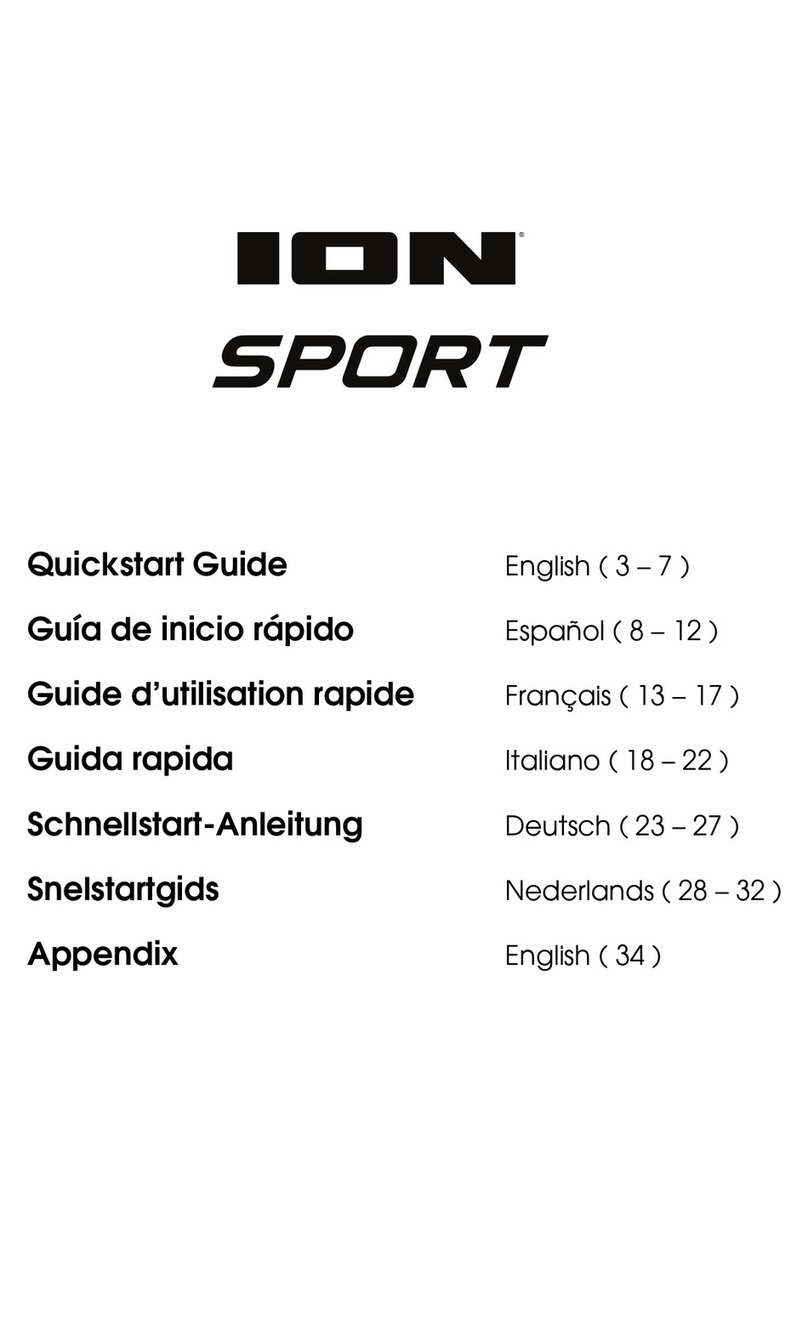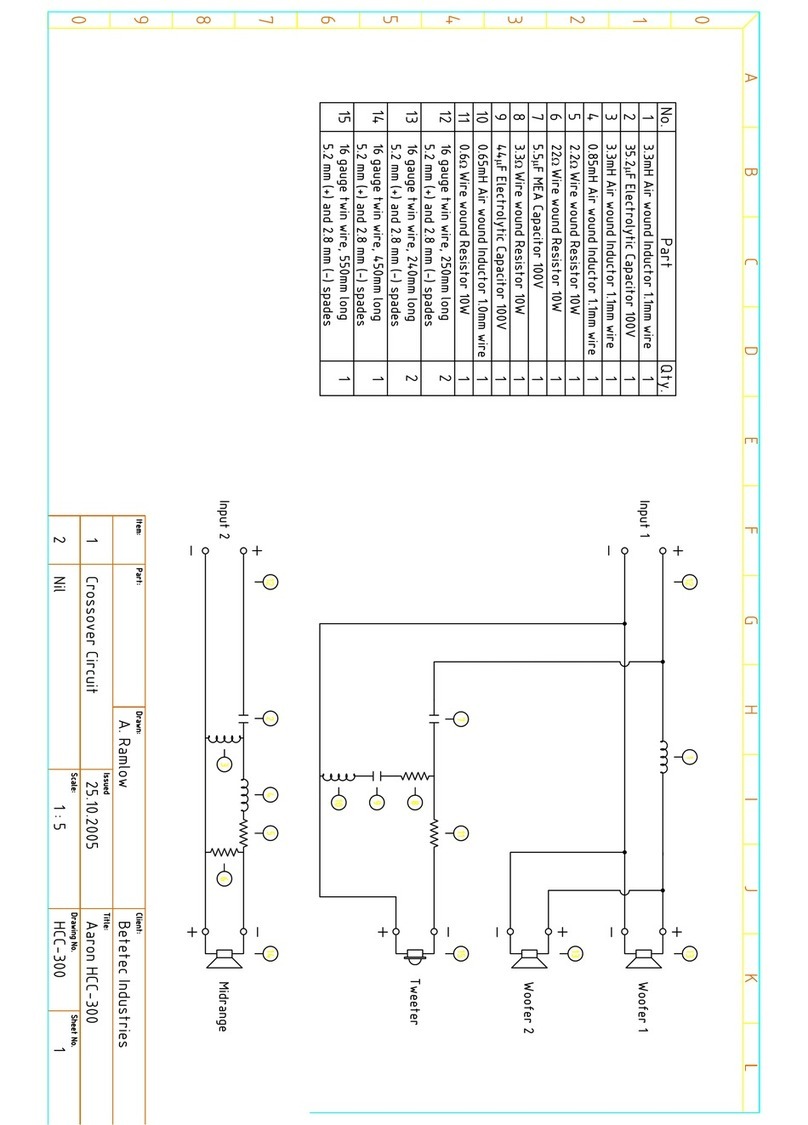
Architect Specifications
39.00" w x 12.12" h x 17.47" d
(991 mm x 308 mm x 444 mm)
116 lbs (52.62 kg); shipping: 130 lbs (58.97 kg)
Multi-ply hardwood
Black textured
Powder-coated hex stamped steel
Patented QuickFly MRF-2D rigging frame with
integral CamLinks™, rear connecting bars and
captive quick-release pins
Dimensions
Weight
Enclosure
Finish
Protective Grille
Rigging
About the Vertical Directivity Plots
39.00
[991 mm]
37.00
[940 mm]
9.99
[254 mm]
12.12
[308 mm]
17.47
[444 mm]
6.06
[154 mm]
19.56
[497 mm]
8.74
[222 mm]
The color images accompanying the upper diagram on the facing page are sound
intensity plots made using the Meyer Sound MAPP Online® acoustical prediction
program, a unique and highly accurate visualization tool for professional sound
system designers.
Using an Internet-connected personal computer, the
designer specifies Meyer Sound loudspeaker models,
their locations, how they are aimed and, optionally,
the locations and composition of walls. This
information travels over the Internet to a powerful
server computer at Meyer Sound headquarters in
Berkeley, Calif. Running a sophisticated algorithm and
using highly accurate measured data that describe
each loudspeaker’s directional characteristics, the
server predicts the sound field that the loudspeakers
will produce, forms a color representation, and
sends the result back for the designer’s computer
to display.
In these sound field plots, the color spectrum is
used to represent levels of sound intensity, with
red being the loudest and blue the softest, as shown
in the scale to the immediate right. These examples
illustrate coverage characteristics for an array
whose splay angles have been tailored to the actual
venue whose section view is superimposed on the
MAPP Online plots.
The loudspeaker shall be a self-powered, full-range
unit for deployment in line array systems. The low-
frequency transducers shall consist of two 10-inch
cone drivers with 2-inch voice coils rated to handle
400 AES watts* each. The high-frequency transducer
shall be one 4-inch diaphragm (1.5-inch exit)
compression driver, rated to handle 250 AES watts,
coupled via a custom REM manifold to a 90° horizontal
constant directivity horn.
The loudspeaker shall incorporate internal processing
electronics and a two-channel amplifier. Processing
functions shall include equalization, phase correction,
driver protection, and signal division for the high-
and low-frequency sections. The crossover point
(equal sound pressure levels between high- and low-
frequency transducers) shall be 575 Hz. An additional
low-frequency crossover shall cause the two
low-frequency transducers to work in combination
between 60 Hz and 350 Hz, with only one working
between 350 Hz and 575 Hz, to maintain optimal polar
response characteristics.
Each amplifier channel shall be class AB/bridged
with complementary MOSFET output stages. Burst
capability shall be 700 watts total with nominal 8-ohm
load for the high-frequency channel and 2 ohms for
the low-frequency channel. Distortion (THD, IM, TIM),
unloaded, shall not exceed 0.02%. Protection circuits
shall include peak and RMS limiters. The audio input
shall be electronically balanced with a 10-kOhm input
impedance and accept a nominal 0 dBV (1 V rms)
signal (20 dBV to produce maximum SPL). Connectors
shall be XLR (A-3) type male and female or VEAM. RF
filtering shall be provided, and CMRR shall be greater
than 50 dB (typically 80 dB, 50 – 500 Hz).
Performance specifications for a typical production
unit shall be as follows, measured at 1/3 octave
resolution: Operating frequency range shall be 60 Hz
to 16 kHz. Phase response shall be ±45° from 650 Hz to
12 kHz. Maximum peak SPL shall be 136 dB at 1 meter
with music. Beamwidth shall be 90°. Vertical coverage
in multi-cabinet arrays shall be dependent on system
configuration.
The internal power supply shall perform automatic
voltage selection, EMI filtering, soft current turn-on
and surge suppression. Powering requirements shall
be nominal 100, 110 or 230 V AC line current at 50 or
60 Hz. UL and CE operating voltage range shall be 100
to 240 V AC.
Maximum peak current draw during burst shall be 5.8
A at 115 V AC, 2.9 A at 230 V AC and 6.7 A at 100 V AC.
Current inrush during soft turn-on shall not exceed 9
A at 115 V AC. AC power connectors shall be locking
PowerCon or VEAM all-in-one muti-pin connector.
The loudspeaker system shall incorporate the
electronics module for Meyer Sound’s RMS remote
monitoring and control system.
All loudspeaker components shall be mounted in an
enclosure constructed of multi-ply hardwood with a
hard black textured finish. The front protective grille
shall be powder-coated, hex stamped steel.
Dimensions shall be 39.00" wide x 12.12" high x 17.47"
deep (991 mm x 308 mm x 444 mm). Weight shall be
116 lbs (52.62 kg).
The loudspeaker shall be the Meyer Sound M2D.
*Loudspeaker driven with a band-limited noise signal with 6 dB
peak-to-average ratio for a period of two hours.




